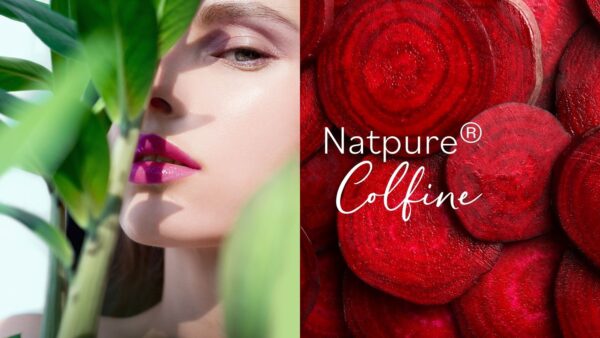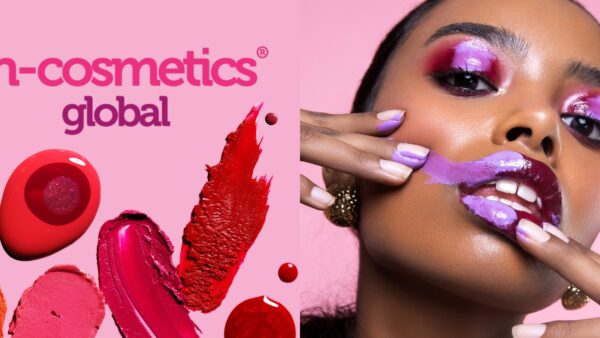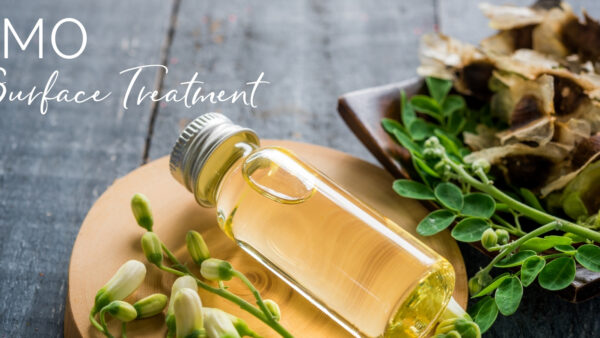By: Véronique Guyot-Ferreol
Cosmetic products have had numerous secondary applications in the course of decades. Cosmetic products that correct, modify, and improve a person’s appearance have also been a symbol of rallying, professional status, and even social identity. This phenomenon has driven people to identify themselves within certain ethnic groups instead of embracing their own identity. Today the trend is reversed. Everyone’s uniqueness is well known, accepted, and even researched. Brands like Fenty beauty highlight individuality and allow each person to embrace their true self.
Mnóstwo odcieni skóry:
Among the differences easily recognized, the difference in skin tones is certainly one of the easiest to see. Hence the scope of these variables seems endless.
Roland Bazin’s book on skin aging elegantly presents four categories of skin tones: Caucasian skin, African-American skin, Asian skin and Indian Skin. Within each of these categories, a number of distinct shades are seen.
With their color expertise, Pantone has developed 110 shades that group together the best qualities of different skin tones. Each of these shades of skin is classified by a 4-digit reference. The first two numbers describe the shade and its saturation, and the second number defines the luminosity or the depth of the color.
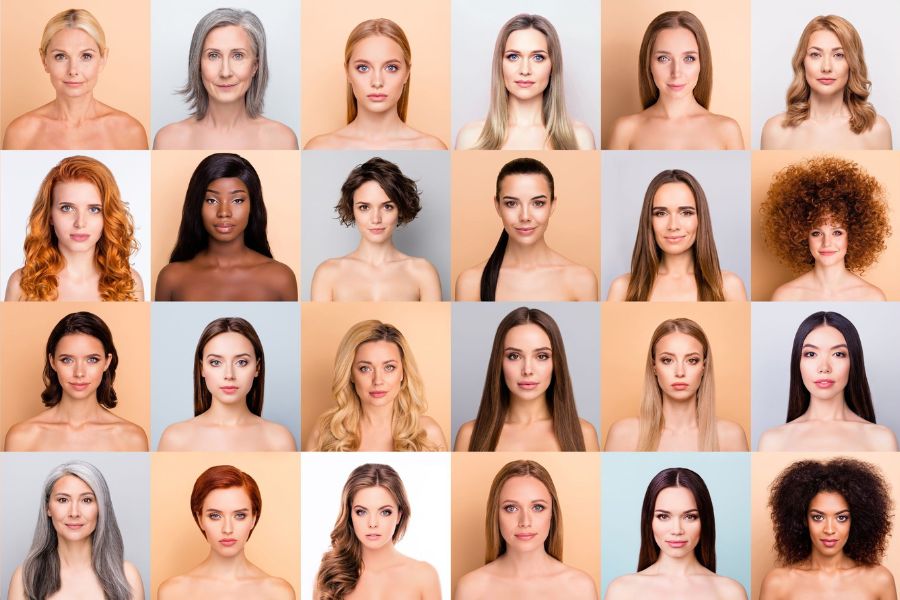
The Brazilian artist and photographer Angélica Dass captured photos of numerous people of different ages, horizons and socio-economic status. She cropped a square of the photographed nose of each subject, matched the color with a Pantone number, and then modified the white background in function of Pantone. Once the modified photo was placed randomly next to other portraits, a viewer could see to what extent the skin tones had really changed and how each should really be appreciated for the beauty that each contains.
It’s the new challenge of the cosmetic industry: appraise the beauty value of each skin shade thanks to foundation that shines for their uniqueness and that don’t put these into stereotypical categories anymore.
This challenge goes well beyond the number of foundation shades needed to satisfy all women. It’s also an industrial challenge to perfectly master all of these shades.
Jak stworzyć odpowiedni odcień?
In general, foundation colors are developed using mineral oxides: titanium dioxide for white, and iron oxides for yellow, red and black. Various combinations of the four basic colors make it possible to create an infinite number of shades.
Since they are mineral pigments, they present themselves under the form of particle aggregates that are insoluble regardless of the media in which they are dispersed.
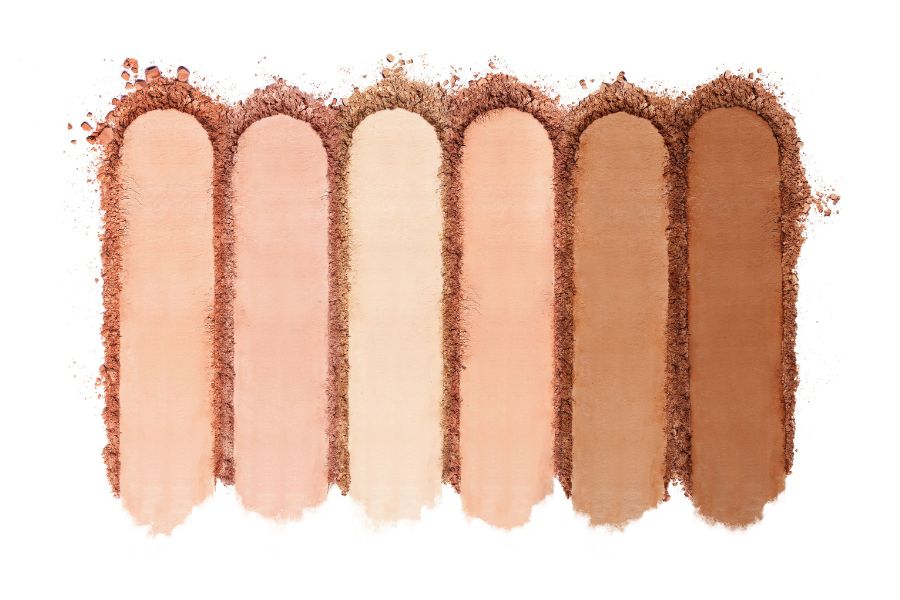
In order to develop the color in an optimal and reproducible manner, a color expert uses various approaches, all having the same goal of producing a homogeneous dispersion of fine pigment particles. There are many approaches to achieving this goal:
- Szlifowanie przy użyciu narzędzi: frezarka kulowa, frezarka trójwalcowa, ...
- Stosowanie gotowych do użycia dyspersji pigmentów
- Użycie pigmentów, które zostały poddane zaawansowanej obróbce powierzchniowej, dzięki czemu łatwo się rozpraszają.
Whatever approach is used, since they are mineral pigments, their refraction index is high which results in a high level of opacity. In this way, the coverage or the transparency of foundation can be adjusted simply by increasing or decreasing the total quantity of mineral pigments.
Finally, as these are mineral oxides, they will show themselves under different crystalline structures and/or different oxidation forms and/or different purity levels that will induce subtle but visible variations in the tone of the pigment.
For example, the anatase form of titanium dioxide will be whiter than rutile titanium dioxide, which is slightly more yellow. Iron oxide Fe2O3, n.H20 is mustard yellow. Iron oxide Fe2O3, or hematite, is dark red. Iron oxide FeO.Fe2O3, also called magnetite, is black.
All of these variations should be well known by man of the art, as well as subtle differences between batches of the same pigment, in order to gain control of the shade adjustment.
Piwnica z możliwością regulacji odcienia:
In the formulation of foundation, different manufacturing procedures can be employed. But generally, two methodologies are preferred:
- Realizacja rozdrobnionych pigmentów wielobarwnych
W tej pierwszej metodzie wszystkie pigmenty są rozdrabniane w oleistej lub wodnistej fazie zewnętrznej, a następnie dyspersja pigmentów jest wprowadzana do pozostałej (końcowej) części receptury. - Wykonanie monochromatycznych skoncentrowanych baz
W tej drugiej metodzie najpierw tworzy się niebarwną formułę, a następnie przygotowuje się 4 zmielone dyspersje pigmentów o wysokim stężeniu. Każdy odcień jest tworzony poprzez dodanie odpowiedniej ilości tych monochromatycznych dyspersji pigmentów do formuły bezbarwnej.
Whichever method used, when setting the color, it is preferable to introduce 90% of the entire pigment load first, and then verify the compliance of the shade. If it is acceptable, then it can be completed with the same shade composition.
If unacceptable, the work of shade adjustment begins.
This starts with a precise observation of the shade to determine what is missing. Most often, visual observation can be combined with use of a spectrocolorimeter (CIE 1976 standard and L* a* b* C* h* colorimetric parameters are commonly used). The basic principles are as follows:
- Jeśli dodamy kolor czerwony lub żółty: odcień będzie bardziej intensywny i nasycony, co spowoduje wzrost wartości składowej barwnej a* lub b* i spadek wartości składowej L*.
- Jeśli dodamy czarny kolor: odcień będzie ciemniejszy - bardziej szary i bardziej nienasycony, co spowoduje zmniejszenie składowych C* i L*.
- Jeśli dodamy kolor biały: cień będzie jaśniejszy i zwiększy się składowa L*.
Hence:
- Jeśli w odcieniu brakuje koloru czerwonego lub żółtego, ale jego intensywność jest dobra: należy jednocześnie zwiększyć ilość pigmentu czerwonego lub żółtego, a następnie białego.
- Jeśli odcień jest zbyt ciemny, ale tonacja jest dobra, należy nieznacznie zwiększyć ilość bieli
- Jeśli odcień jest zbyt jasny, ale tonacja jest dobra: proporcjonalnie zwiększ ilość pozostałych pigmentów
- Jeśli odcień jest zbyt pomarańczowy, zbyt intensywny: zwiększ ilość czerni, aby go rozmazać.
In order to insure that the shade adjustment is effective, it is better to do this adjustment little by little on the 10% of the pigment load left with a visual and instrumental control of the shade at each step as well as a test to the application.
Using the method described above, it is possible to create an abundance of shades with a very high level of reproducibility and giving the consumer the same desired shade that best fits with their skin tone.
Need help formulation and color/shade matching? Contact us now.

